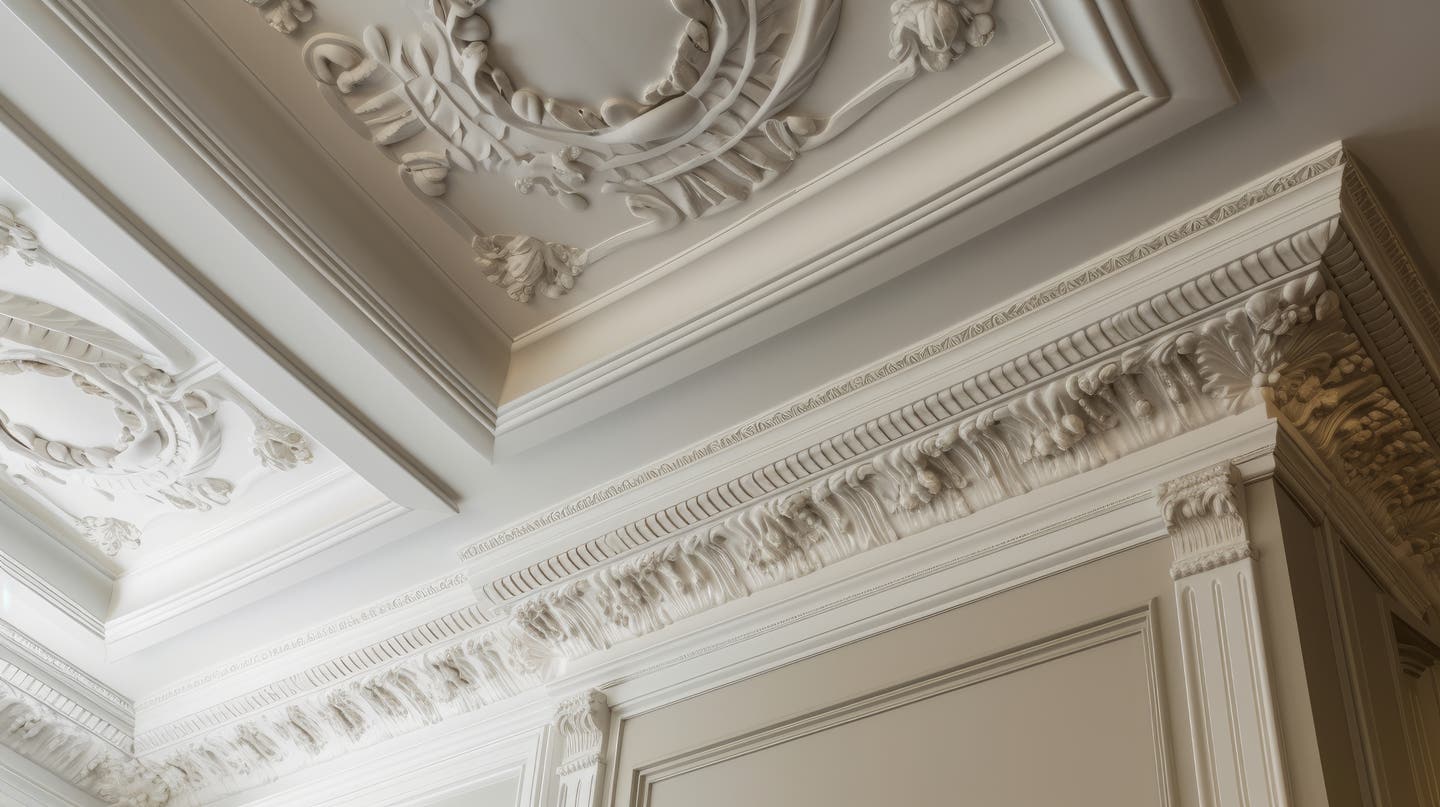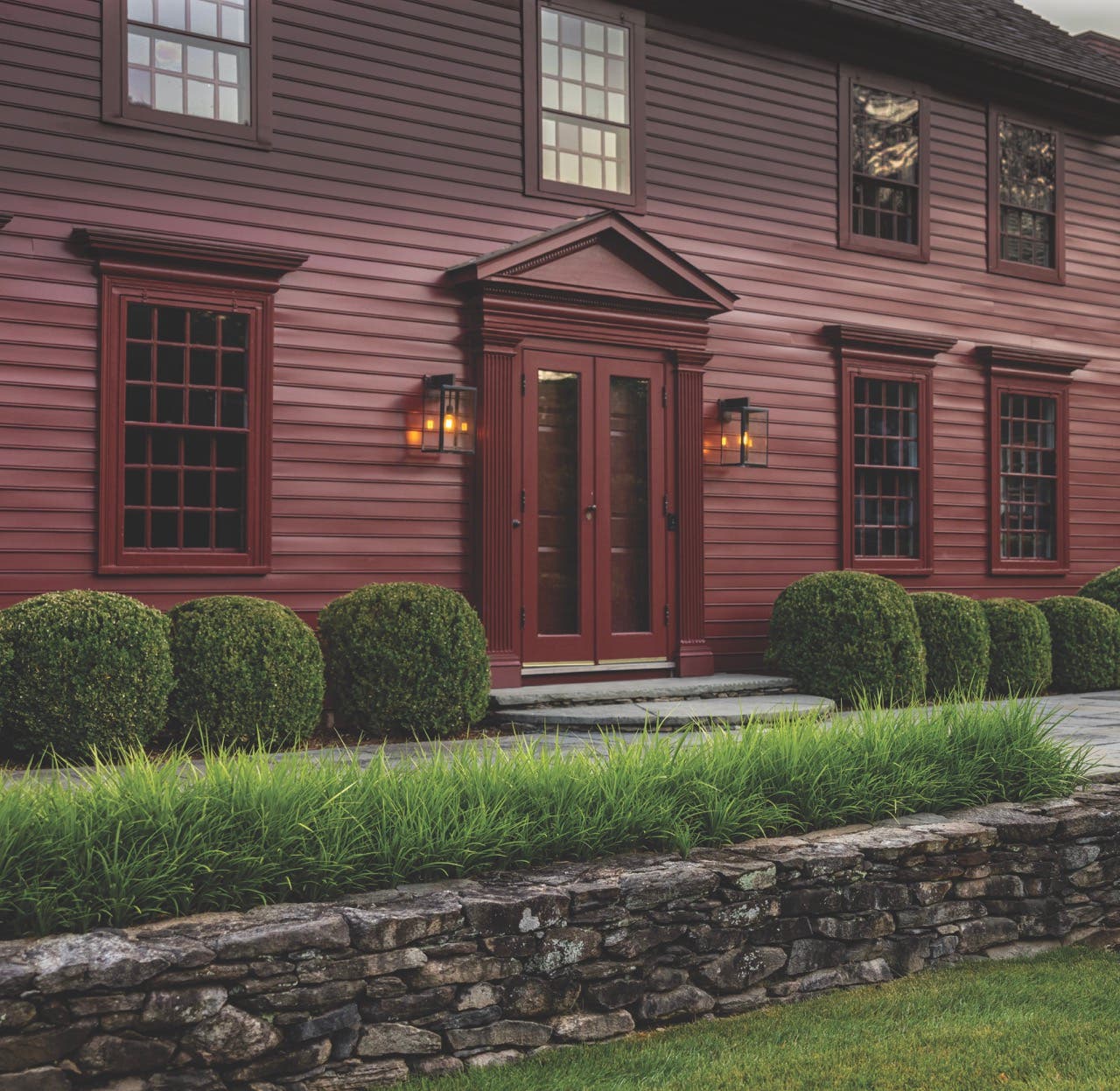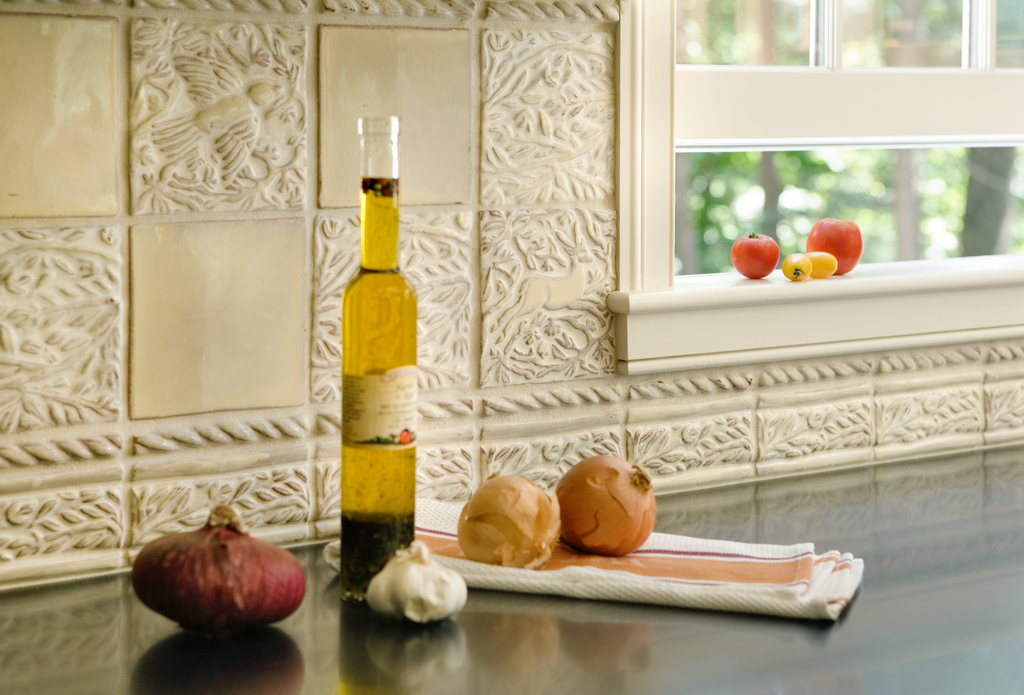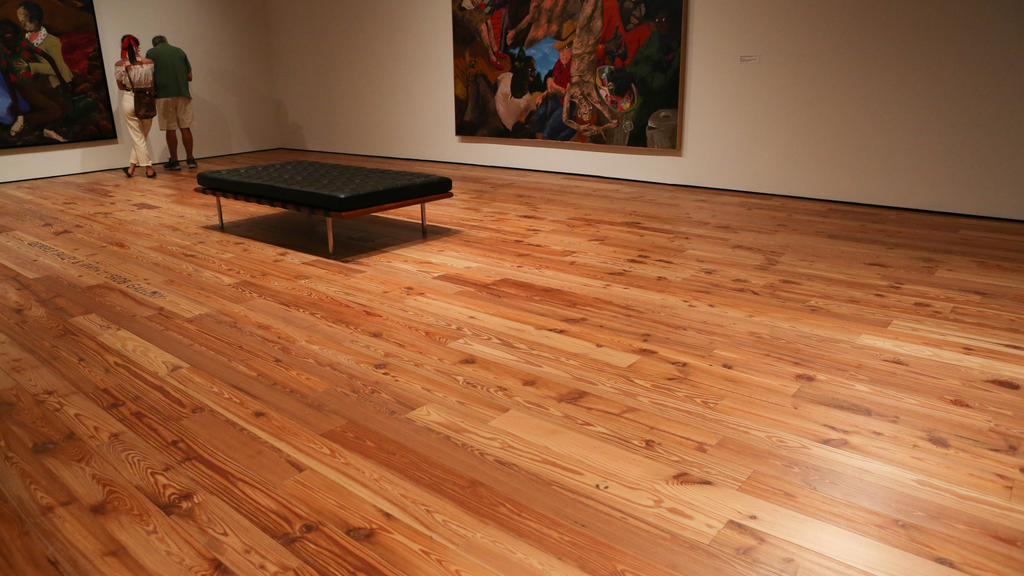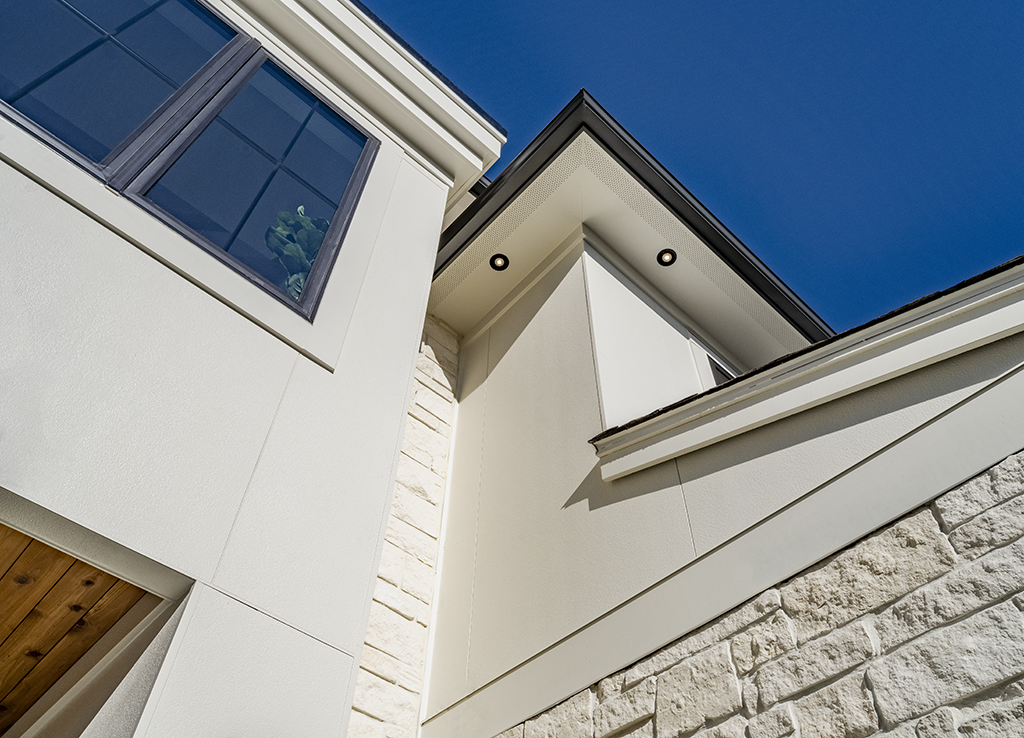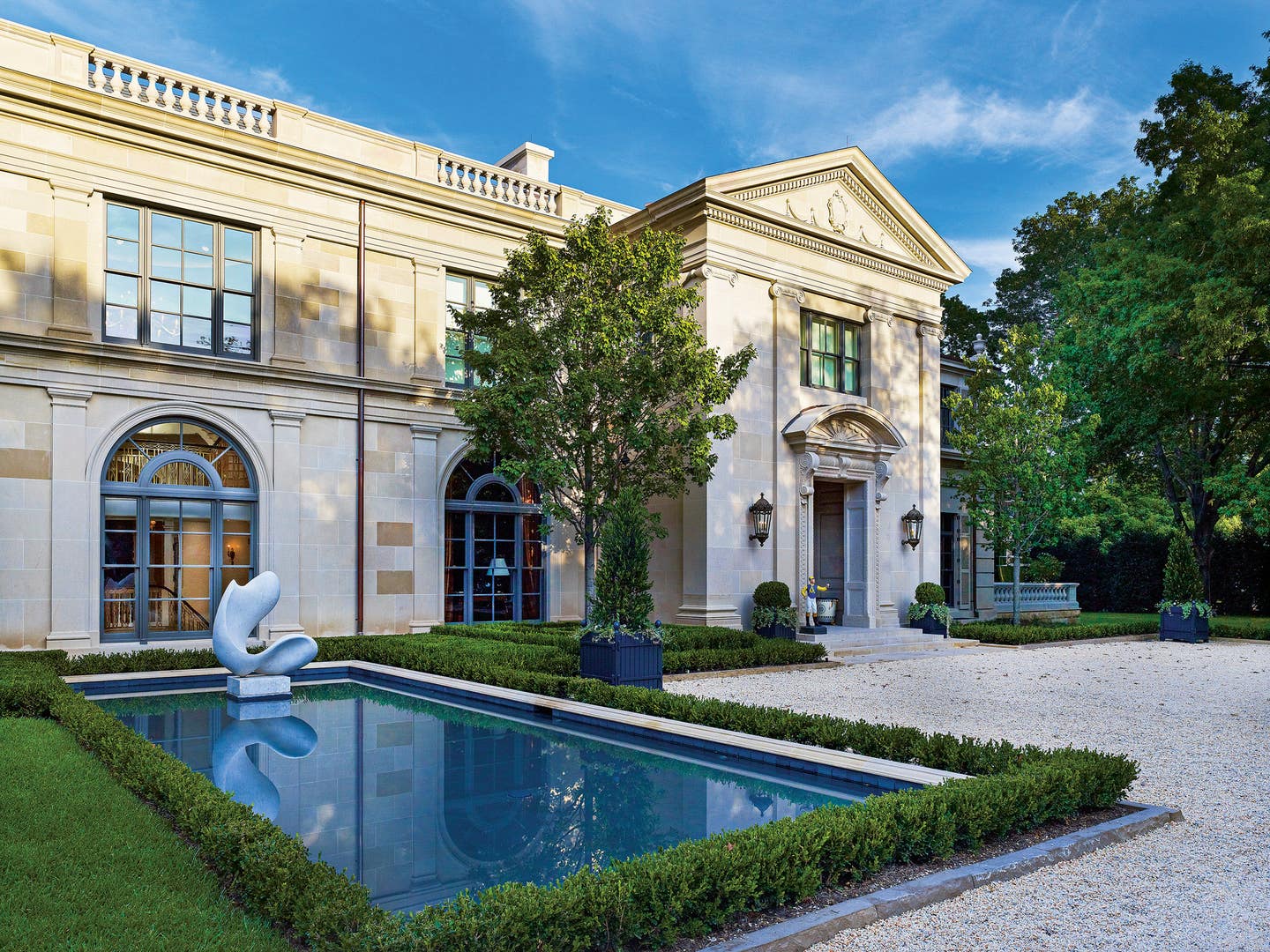
Product Reports
Building with Stone
In traditional architecture, natural stone is a most valued material; its very use signals that the building it’s on is designed to last the test of time. We talked with three architects who shared their thoughts on the subject and gave us details on various applications.
Larry E. Boerder
Larry E. Boerder, AIA, whose eponymous firm is based in Dallas, always chooses natural stone, either rubble or cut, depending on the application, because of its durability and sustainability. Boerder, who has built over 250 residences in his 35-year career, generally selects Texas limestone, which is plentiful in the Lone Star State. He says, “Texas limestone actually is a cost-effective choice for his projects because as it’s locally sourced, shipping is not expensive.”
Boerder has worked with a variety of natural stone but does not use thin veneers attached with adhesives. He recently designed a house that mixes Wissahickon Schist from Philadelphia with Texas limestone.
“Wissahickon is a grayish stone that was used in the iconic Main Line homes of the city,” he says. “The client had seen it and requested it, and I was familiar with it because I once lived in Philadelphia.” The Wissahickon is being be used for the walls of the house, and the Texas stone will be used for carvings. “The Philadelphia stone gets harder when it weathers,” he notes.
In another Dallas project, Boerder combined Texas Ashlar stone with stone imported from Spain. “This home is built with load-bearing masonry that will last 400 years,” he says. Yet another client requested stone from France. “It was quarried 200 years ago,” he says. “It looks ancient; it was used for utilitarian purposes, possibly on bridges.”
On a Palladian-style residence clad in cut-stone Texas limestone, Boerder employed 18th-century building techniques that greatly increase the home’s longevity. “The walls, which are 1 foot and 10 inches thick on the outside, are solid-masonry with plaster on the interior walls,” he says. “The house is built to last at least 400 years. Some of my other homes are built to last 150 to 200 years.”
In every project, he says, “I’m always going to advocate cut stone because, among other qualities, it has a crisper edge whereas synthetic chips.”
Ken Tate
Ken Tate, whose namesake firm has offices in West Palm Beach and New Orleans, often selects natural cut stone to complement the style of the building he’s designing. His go-to cut stone for classical architecture is limestone, particularly Indiana limestone, which traditionally was used, along with granite and marble, on 19th-century U.S. government buildings, such as capitols and courthouses, all over America.
“Limestone is denser than most other stones, and Indiana limestone, which has a warm, gray color, is flawless—there’s no grain, no pits and no character in it,” he says, adding that it’s most appropriate for high-end Georgian and Federal styles. “It’s beautiful, it’s stately.”
For an award-winning Palladian-style villa in New Orleans, Tate chose Texas Lueders limestone, which has a tight grain and is a light gray/buff color, to bring out all the defining details of the residence’s classical facade. He’s also worked with Texas Cream, which he calls “a beautiful blonde stone that ages well.”
It was his choice for the exterior of a French Country-style tinted-stucco home. “It’s not as strong as Texas limestone, and when it arrived, it was chipped here and there, and the owner wanted to send it back,” Tate says. “But I told him that it was perfect because we wanted it to look like an old house.”
For Florida projects, Tate considers coquina stone, which, he says, “is associated with South Florida’s architectural style; it gives a local flavor and ties to the local culture.” He’s exploring coral stone from the Dominican Republic for a Mediterranean-style stucco house he’s designed for a Palm Beach client. “I’m going to go to the quarry to see it,” he says. “We’ll use cut stone for all the details—the columns, cornices, casements, windowsills and belt courses.”
And for a house in California, he’s using 3- to 4-inch-thick Santa Barbara rubble stone for the façade and is complementing it with cut-stone details. “The rubble has a rough face,” he says, “which makes the house look like an older farmhouse.”
Robert A.M. Stern Architects
When schedule and budget demand it, Robert A.M. Stern Architects turns to an innovative precast-backed panel system it developed with fabricators to use in place of stone hand-laid on site.
The system, which is cost- and time-effective, “allows us to offer rich architectural detail, producing aesthetic effects that we could not otherwise afford,” says Partner Kevin M. Smith, adding that “we learned from strategies developed in the early twentieth century.”
The New York City-based firm inaugurated the system on a stone-clad science building and then the Collegiate Gothic North Campus residence halls at Marist College in Poughkeepsie, New York.
Although precast-backed brick panels are assembled by aligning bricks upside down and pouring concrete over them, Smith says with stone that method didn’t work because “there’s an artistry to laying stone. We experimented and ended up casting the panels while they were upright and then laying each stone face up so the masons could stand back and see their work.”
Quarter-inch veneer granite, attached by epoxy mortar, was used for the cladding, and exposed precast set into the same panels matches the finish and color of the Indiana limestone trim used elsewhere on the Marist campus.
By contrast, at Villanova University in Pennsylvania, six interlinked Collegiate Gothic student residential buildings—the Commons—are faced with hand-laid natural-cut stone.
“It made sense to use natural-cut granite for the Villanova residence halls because the buildings’ structure is concrete block that had to be laid by hand anyway,” Smith says, whereas at Marist the structures are steel. “In addition, we wanted the buildings at Villanova to have a relaxed feel, with less of the finished trim that traditionally would have been cut limestone.”
He notes that Villanova’s new performing arts center, clad with the new panelized system the firm worked with at Marist, is directly across the street from the Commons, and “when you look at the two projects, they look like they both were laid by masons who care about their artistry—because they were.”
Key Suppliers
Aztec Stone Empire, aztecstoneempire.com, works with contractors and homeowners in the Atlanta, Georgia area and carries a variety of stone, including Tennessee fieldstone, Pennsylvania bluestone, granite and cobblestones.
Booms Stone Co., boomsstone.com, specializes in crafting customized interiors and exteriors, natural stone floors, stone veneer walls, stone cladding, planters, columns, lobby reception areas and countertops.
Bybee Stone Co., bybeestone.com, is an Indiana limestone fabricator specializing in custom fabrication for new construction and restoration projects.
Continental Cut Stone, continentalcustone.com, is a nationally recognized architectural cut stone fabrication mill and quarrier of Cream and Shell and Lueders limestone.
Old World Stone Ltd., oldworldstone.com, fabricates stone products by combining traditional techniques with state-of-the-art technology using computerized drawings and cutting and carving equipment.
Phenix Marble Co., phenixmarble.com, mines and fabricates natural building stone for interior and exterior uses.
Traditional Cut Stone, traditionalcutstone.com, employs traditional stone carvers and specializes in large-scale restoration projects such as the Minnesota State Capitol, Toronto’s Old City Hall and St. Michael’s Cathedral.




